Hunting is not conservation.

Within the past few years International Animal Rescue Foundation America and Africa has noticed the increasing trend of feminine hunters from which take their pseudo conservation to an all-out extremity than that of the male hunter angering activists and conservationists furthermore.
Within this brief article we look at hunting in general, whether hunters are psychotic or not, and dispelling some of the myths that many hunters state the reason why they have to hunt. Providing factual insights that hunters men and women fail to recognise.
We can just about get our heads around hunting, but when one poses with the mammal they have just shot dead whether it is in a bikini, stilettoes, or just bare naked then hunting becomes more an “antisocial personality disorder” or “sociopathology.” Whatever the feminine or male hunter wishes to reveal their hunt as, it most certainly is not conservation. More concerning is that female and male hunters are becoming more younger.
Keeping on track and not swaying into the unknown we have to understand that both male and female hunters are not criminally insane unless they have been labelled by a clinical psychiatrist with a psychiatric illness that would then progress onto further anti-social behaviours or even killing. Psychopaths often make successful businessmen or world leaders. Not all psychopaths are motivated to kill. But when it is easy to devalue others, and you have had a lifetime of perceived injustices and rejection, murder might seem like a natural choice.
The following are environmental factors, psychiatrists say, which create a sociopath:
- Studies show that 60% of psychopathic individuals had lost a parent;
- Child is deprived of love or nurturing; parents are detached or absent;
- Inconsistent discipline: if father is stern and mother is soft, child learns to hate authority and manipulate mother;
- Hypocritical parents who privately belittle the child while publicly presenting the image of a “happy family”.
Hunting is a very basic instinct programmed into the master computer of our species for survival purposes that has been elevated by ethics to become a “sport,” which enables us to express our basic biological identity, “The Id,” guided social ethics, religious teachings and laws. Erich Fromm, one of the most widely-respected behavioural scientists of the 20th century, summed up these opinions in his widely-acclaimed study of the causes and prevention of violence, “The Anatomy of Human Destructiveness”.
To date there has been no proven field evidence that supports what many activists quote “hunting is a form of mental illness”. We have researched into this area in great depth but have located very little evidence to prove this theory. The main concern here though is that of female hunters and how their children now want to do what mommy does best – kill for the thrill of it. Hunting is not conservation unless we are killing the human population that increases habitat fragmentation, increased urbanization and industrialization that decreases habitat loss thus forcing animals out of their natural environment encroaching onto humans.
In recent years, American women are spending more time in tree stands and deer blinds—and putting fresh meat on the table. Although men still account for the majority of the 13.7 million U.S. hunters, the number of women actively hunting is on the rise. The total number of women hunters surged by 25 percent between 2006 and 2011, after holding steady for a decade, according to Census Bureau statistics. At last count, 11 percent of all U.S. hunters were women, compared to 9 percent in 2006.
Many state departments of natural resources have begun hosting Becoming an Outdoors-Woman (BOW) workshops that offer instruction in skills such as archery, shotgun, and rifle shooting. “There is definitely a high demand. We have over 3,000 women on our mailing list, and workshops fill up quickly,” says Patricia Handy, Information & Education Program Manager at the Department of Natural Resources in Maryland. Retailers have taken notice, too. Companies like SHE Outdoor Apparel, Cabela’s, and Próis are outfitting women hunters with clothing and accessories created for the female body, and archery manufacturers like Mathews Inc. are designing lighter bows scaled for shorter arm spans.
“Across the board, women are more independent than they’ve ever been, and they realize they are capable of hunting,” says Brenda Valentine, national spokesperson for the National Wild Turkey Federation and the self-proclaimed “First Lady of Hunting.”
The Next Food Frontier?
Gender roles in America have changed in many ways through time, but women still dominate household food and nutrition decisions. The Bureau of Labour Statistics’ 2012 American Time Use survey found that nearly two-thirds of women are involved in daily household food preparation and clean-up, compared to 39 percent of men—and women spend triple the amount of time on such tasks in an average day.
Women are also leading a surge of support for sustainable food and agriculture initiatives like CSAs and farmers markets. One of the main ideas of such initiatives is eating locally, generally meaning foods produced within your state or about 100 miles of your home. This not only supports the local economy and environment, it also means the food often tastes better because it can be harvested and sold at its peak rather than spending days in transport.
But in many parts of the country, local meat can be difficult to find. Most of the available meat at U.S. grocery stores comes from one of the large-scale commercial farms, often called factory farms, concentrated in a few regions. Hunting offers an alternative to the grocery store that lets women provide truly free-range and organic meat for their families while also helping create a more sustainable food system, says Lily Raff McCaulou, author of Call of the Mild: Learning to Hunt My Own Dinner. “Hunting may be the next frontier for local food,” says McCaulou, who lives in Oregon. She regularly hunts deer and elk, and recently added grouse and duck to her repertoire.
“I was pretty detached from what I ate before I started hunting. Since I’ve started hunting, I’ve changed my relationship with the meat that I eat, and I eat a lot less meat than I did before. Hunting’s a way to reclaim some closeness to the food chain.” It can make chefs more thoughtful, too, says Georgia Pellegrini, author of the book Girl Hunter. “Hunting made me realize that there’s a lot that has to happen before that piece of meat gets to your plate,” says Pellegrini. “As a chef, I wanted to participate in that process because it makes the experience more meaningful. You think about the ingredients differently, you think about the experience of eating it differently, and you have more control over how the animal was treated.”
Making Connections
Many hunters—both men and women—say their hobby is not just about food. It also creates a sense of intimacy and respect for both the animals and their habitats. Writer Tovar Cerulli was a longtime vegetarian when he took up hunting, deciding that eating “the ultimate free-range meat” was an ethical and sustainable choice. “Hunting also allowed me to gain a deeper understanding of the place I lived,” says Cerulli, author of the book A Mindful Carnivore. He argues that in a regulated, well-managed system, “there is nothing inherently ecologically damaging about hunting.” It can actually benefit the animals by preventing overpopulation, which can lead to starvation during winter months.
Hunters are also quick to note that funds from purchases of licenses, equipment, and ammunition go to support conservation efforts for a variety of species. According to the U.S. Fish and Wildlife Service, every year nearly $200 million is distributed from the federal taxes associated with hunting to support wildlife management programs, the purchase of lands for habitat conservation, and hunter education and safety classes. There’s another factor, too: fun. Hunting is a way for women to be outdoors and enjoy nature while spending time with husbands and children who hunt.
“Women are realizing how much fun hunting is and how close it can actually bring them in their relationships with their families,” says Tiffany Lakosky, co-host of the Outdoor Channel hunting show Crush with Lee and Tiffany and a top bowhunter. “The whole concept is that I am shooting my family’s dinner tonight and we’re eating something I shot. I would say probably 90 percent of the meat we eat, we hunted.” While shooting the family dinner isn’t a realistic option for everyone, especially in urban areas, Lakosky says she hopes even non-hunters will start giving more thought to where their food comes from. “We are all part of the food chain. There is a balance in nature,” she says. “People go to the supermarket and they think that somebody’s growing a TV dinner somewhere to feed them. They are just not connected to it like people were 100 years ago.”
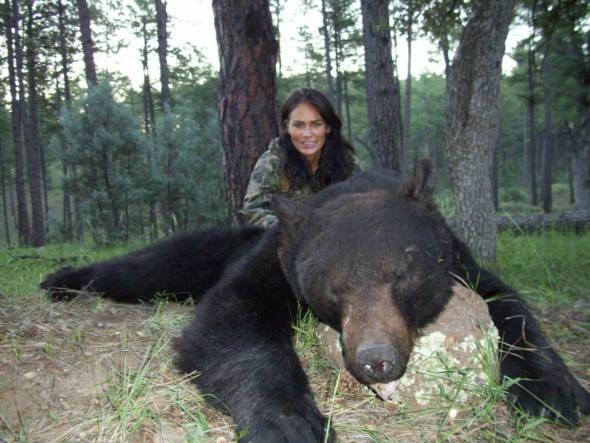
Hunters will speak the same lame excuses that their food is not free range, there is a lack of hypermarkets within their area or farmer markets thus forcing them to hunt for their dinner. They have to keep animal overpopulation controlled to thwart human species attacks and farmland-ranch attacks from predatory big cats and so on.
Hunters quote they have to hunt for their dinner because there are vast “food deserts” within the United States. Basically meaning that there are a lack of if any food outlets within their state or country; Below are some of the key points that hunters need to take on board before accusing conservationists and animal rights activists of attacking them. From which we/they are trying to educate them of their own wrongdoings.
- There are approximately 131000 people employed as a butchers and meat cutters within the United States of America. There are over 100 grocery stores in the USA. There are over 75 large well-known grocery retailers and 50 small chain grocery stores located all through the United States.
- Approximately 23.5 million Americans live in a food desert, says the USDA, including vast, rural swaths of West Virginia, Ohio, and Kentucky, as well as urban areas like Detroit, Chicago, and New York City. The government believes food deserts are contributing to the obesity epidemic in the U.S., by forcing the rural and urban poor to rely on processed foods and fast food, instead of fresh meat, vegetables, and fruit. Today, more than one third of adult Americans are obese.
- Will people choose healthy food? Not necessarily. Many Americans have little experience eating or preparing broccoli, asparagus, and other produce; in fact, only 26 percent of the nation’s adults now eat three servings of vegetables a day. The poor, in particular, have become so accustomed to salty packaged foods and sugary beverages that they find fresh food bland, strange, and off-putting. “It’s simplistic thinking that if you put fruits and vegetables there, they’ll buy it,” said Barry Popkin, author of the UNC study. “You have to encourage it, you need advertising, you need support.” Changing Americans’ diets, in other words, won’t be as simple as telling them to eat their peas.
One female hunter Linda Hall Houle that wishes to argue facts with us states “Wow you all are something else.. Why don’t you take care of people in your own country … God Bless America and our right to hunt…If a wolf ever came to my property dam right I will shoot it.. I am thrilled to see more women hunting putting meat on the table is #1
What is a ‘food desert’?
A community in which residents must travel at least a mile to buy fresh meat, dairy products, and vegetables. More precisely, the U.S. Department of Agriculture (USDA) defines a food desert as any census district where at least 20 percent of the inhabitants are below the poverty line and 33 percent live over a mile from the nearest supermarket (or in rural areas, more than 10 miles). Approximately 23.5 million Americans live in a food desert, says the USDA, including vast, rural swaths of West Virginia, Ohio, and Kentucky, as well as urban areas like Detroit, Chicago, and New York City. The government believes food deserts are contributing to the obesity epidemic in the U.S., by forcing the rural and urban poor to rely on processed foods and fast food, instead of fresh meat, vegetables, and fruit. Today, more than one third of adult Americans are obese.
How can Americans solve this problem that sees some 13.5 million hunters actively taking out many species of mammals just within the United States for example? Simple they start taking a leaf out of the Europeans book of how to provide for the community. Take a look at the UK Cooperative Society for example and how well they have progressed from a simple “community based food shop” to now a thriving international food and beverage seller. If it can be achieved here it can also be accomplished within the United States from which hunters would not need to hunt. However we then have the other quote that hunters constantly chirp on about. “We have to hunt to keep overpopulation of species controlled”.
http://www.co-operative.coop/corporate/aboutus/ourhistory/ History of the Cooperative Food Society
The average female and male hunter seem to disagree with us that overpopulation of humans is not a problem but more overpopulation of animals. This is completely absurd and something many hunters now need to wake up too. The more we argue that hunting has to be practiced because of species human and species-species conflict the more we will continue to eradicate many countless number of animals globally. Taking the United States for example again the hunter wishes to quote overpopulation is not a primary concern.
“There’s a cost that comes with having 7-9 billion people on our planet, especially when it comes to species already on the brink of extinction,” said Amy Harwood, the Center’s 7 Billion and Counting campaign coordinator. “The polar bear, Florida panther and bluefin tuna are just a few of the species being pushed toward extinction by the world’s rapidly growing population. People have taken away habitat for plants and animals, sucked up their water, and surrounded them with pollution, causing a global mass extinction crisis.” As the human population grows and rich countries continue to consume resources at voracious rates, we are crowding out, poisoning and eating all other species into extinction. With the world population hitting 7-9 billion, the Center is marking this milestone by releasing a list of species in the United States facing extinction caused by the growing human population.
The 10 species represent a range of geography, as well as species diversity — but all are critically threatened by the effects of overpopulation. Some, like the Florida panther and Mississippi gopher frog, are rapidly losing habitat as the human population expands. Others are seeing their habitat dangerously altered — like the small flowering sandplain gerardia in New England — or, like the bluefin tuna, are buckling under the weight of massive overfishing. Still others, like the polar bear, are facing extinction because of fossil fuels driving catastrophic global warming. “Human overpopulation and overconsumption are simply taking away the land, air and water other creatures need to survive,” Harwood said. “The world population is expected to hit 10 billion by the end of this century. Left unchecked, this massive population growth will have a disastrous effect on biodiversity around the globe — biodiversity we need to maintain the web of life we’ve always depended on.”
Top 10 U.S. Species Being Driven Extinct by Overpopulation
Florida panther: The Florida panther once ranged throughout the southeastern United States, but now survives in a tiny area of South Florida representing just 5 percent of its former range. It was listed as an endangered species in 1967 because of habitat destruction and fragmentation through urban sprawl. Large numbers of panthers died as the expanding network of roads connecting Florida’s rapidly growing human population spread throughout its range. As of 2011, there are only 100 to 120 panthers left.
As Florida’s panther numbers plummeted, the state’s human population nearly doubled over the past 30 years. Recent development patterns pose extreme threats to panthers. As the Florida coasts approach full buildout and have become unaffordable to most people, development has moved inland to the same places panthers retreated to as safe havens decades ago.
A recent study concluded that current conditions “provide just enough space to support a [panther] population that is barely viable demographically as long as the habitat base remains stable.” Unfortunately, the habitat is anything but stable: The five counties containing the last remaining panther population are projected to grow 55 percent in the next 30 years. A single proposed development among many, Big Cypress, would destroy 2,800 acres to make way for 9,000 new homes.
Atlantic bluefin tuna: Marine fish provide 15 percent of all animal protein consumed by human beings. Fisheries management, however, has been outpaced by our population growth, causing global fisheries to collapse under the unsustainable pressure. A 2009 assessment found that 80 percent of global fish stocks are either overly and fully exploited or have collapsed. Though a catch reduction of 20-50 percent is needed to make global fisheries sustainable, the demand for fish is expected to increase by 35 million tons by 2030.
Of greatest concern is the western Atlantic bluefin tuna that spawns in the Gulf of Mexico and has declined by more than 80 percent since 1970 due to overharvesting. Prized as a sushi fish around the world, it has become more valuable as it has become rare. One fish in 2011 sold for $396,000. The large, warm-blooded bluefin tuna is a common, upscale sushi menu item and has been severely overfished. The Atlantic bluefin, like so many other ocean species, is threatened by humans’ ravenous appetites: Demand far exceeds sustainable fishing levels.
Loggerhead sea turtles: More than half the world’s 7 billion people live within 150 miles of the coast, putting tremendous pressure on species trying to find space to live and reproduce among the crowds. Among them is the loggerhead sea turtle, which was listed as a federally threatened species in 1978 owing to destruction of its beach nesting habitat, harassment while nesting, overharvesting of its eggs, and bycatch death via commercial fishing gear.
Ninety-five percent of the U.S. breeding population of loggerheads nests in Florida, whose human population has doubled in the past 30 years. Thanks to careful management, the species’ population increased 24 percent from 1989 to 1998, but under intense pressure from development and recreational beach use, it declined dramatically thereafter, raising concerns it should be uplisted to “endangered” status. The population has increased in recent years, but is still highly vulnerable to nesting habitat destruction and disruption. Just 42,000 nesting attempts were made on Florida beaches in 2011.
Sandplain gerardia: As the human population has increased, it has consumed remote landscapes with houses and other structures. The natural disturbances caused by fire, flood, drought and storm patterns, are suppressed despite playing essential roles in ecosystem health. In conflict with the permanence of human development, these disturbances create an ever-changing blend of meadow and forest, young and mature vegetation patterns. By controlling, limiting and often stopping these essential natural processes, we have changed ecosystems across America, eliminating habitat for rare and endangered species that depend on open habitats.
In New England and the Atlantic coast, brush fires once thinned out dense pine forests and created a constantly moving mosaic of grasslands and prairies. The fires have been suppressed to protect human structures, causing open habitats to be permanently replaced by forest and brush. This nearly caused the extinction of the sandplain gerardia, a coastal plant in the snapdragon family.
The sandplain gerardia was listed as an endangered species in 1998 when just 12 populations remained. Several were in historic cemeteries on Cape Cod as these made up some of the only open areas not covered by roads or development. Twenty-two populations exist today throughout the species’ range from Massachusetts to Maryland. Many are threatened by development and fire suppression, needing constant, active habitat maintenance.
Lange’s metalmark butterfly: Many endangered species are endemics, meaning they naturally have very small ranges and populations sizes, and usually require very particular soil, vegetation or climate conditions to survive. These species are especially vulnerable to human encroachment. Among them is Lange’s metalmark butterfly, protected as endangered in 1976.
Lange’s metalmark lives only in the Antioch Dunes at the southern end of San Francisco Bay. This unique ecosystem harbored many unique species, and many species have gone extinct as its dunes were hauled away in massive increments. After the 1906 fires, the city of San Francisco was rebuilt using brick-building material removed from the dunes.
Lange’s metalmark is one of the most endangered species in the United States. It declined from some 250,000 in historic times to just 154 in 1986. It improved a bit, but then declined to just 45 butterflies in 2006. Today the species is still on the knife edge of extinction, with about 150 individuals remaining.
To save Lange’s metalmark and two other endemic dune species, 55 of the remaining 60 acres of its habitat were purchased and turned into a national wildlife refuge — the first of its kind devoted entirely to endangered species. Under siege in one of the most densely populated regions in the country, however, the tiny refuge is surrounded by mining, oil and gas facilities. Recreationists have also taken a toll, causing several devastating fires; they trampled much of the butterfly’s habitat in 1986. Such is the fate of an extremely rare, highly endemic species trying to eke out an existence in a highly urbanized landscape.
Mississippi gopher frog: The Mississippi gopher frog lives in stump holes and burrows dug by other animals, laying its eggs in ponds so shallow they dry up for several months of the year, keeping them free of fish that would eat frog eggs. It was placed on the endangered species list in 2001.
The U.S. Fish and Wildlife Service proposed to designate 7,015 acres as protected critical habitat for the Mississippi gopher frog in Mississippi and Louisiana in 2011.
Reduced to approximately 100 individuals in the wild, the Mississippi gopher frog exists in just three small ponds just outside the proposed “town” of Tradition, Mississippi. Planned development would have a devastating effect on this rare frog.
White River spinedace: The human population of Nevada grew by 35 percent between 2000 and 2010, nearly four times faster than the national average. Las Vegas was one of the fastest-growing areas of the state. But the city is in the middle of a desert, so accommodating that explosive growth requires securing more water from nonlocal supplies.
The Southern Nevada Water Authority has proposed a massive project to pump billions of gallons of groundwater a year from eastern Nevada and western Utah through a 300-mile pipeline to supply rapidly growing urban areas like Las Vegas. The project will have a disastrous effect on dozens of imperiled species, including the White River spinedace, which was protected as an endangered species in 1985. One population of this rare fish was extirpated in 1991 because of irrigation diversion, and fewer than 50 fish remained in a single population in northeast Nevada.
The White River spinedace’s population at the Wayne E. Kirch Wildlife Management Area is directly threatened by the proposed pipeline, which will cut through the management area, draining and destroying critical habitat for the remaining populations. A recent environmental impact statement for the proposed pipeline project disclosed that major vegetation and ecosystem changes would occur on more than 200,000 acres, including wetlands that will dry up and wildlife shrubland habitat converted to dryland grasses and noxious weeds. More than 300 springs would also be hurt, along with more than 120 miles of streams.
Polar bear: A polar bear is fit to swim 100 miles for food, in search of mates or, more recently, just some ice to stand on. With five inches of blubber keeping this enormous bear prepared for subzero temperatures, the largest member of the bear family has adapted to remarkable Arctic conditions. The fat stored in a polar bear carcass becomes essential food for other Arctic species, like the Arctic fox. However, the extreme impacts that human-caused climate change has had on the Arctic is pushing the polar bear closer to extinction.
The rapid growth of the global human population — which has doubled since 1970 — has fed a massive push for more and more polluting fossil fuels and dramatically altered the planet’s atmosphere. A 2009 study on the relationship between population growth and global warming found that the “carbon legacy” of just one person can produce 20 times more greenhouse gases than one person saves by carbon-reducing steps such as driving high-mileage, using energy-efficient applicants and light bulbs. Few animals are bearing more of the brunt of the global climate crisis than the polar bear.
Listed as a “threatened” species in 2008, polar bears are rapidly losing the sea ice they use to hunt, mate and raise their young. Polar bear numbers increased following the establishment of hunting regulations in the 1970s and today stand at 20,000 to 25,000. However, the rapid decline of Arctic sea ice because of global warming has reversed this trend, and currently at least five of the 19 polar bear populations are declining. The U.S. Geological Survey predicts that under current greenhouse gas emission trends, two-thirds of the world’s polar bears, including all those in Alaska, will likely disappear by 2050.
Gulf sturgeon: Lake Lanier, a manmade reservoir in Georgia, feeds several important river systems in the southeastern United States and has been the site of a longstanding conflict between Georgia, Florida and Alabama over water-use rights.
The gulf sturgeon, an anadromous fish, was placed on the threatened species list in 1991. Its most imperiled populations occur in the Apalachicola River, fed by rivers from Lake Lanier. Gulf sturgeon lay eggs on the waterlines along the banks of rivers, and maintaining the right level of water is critical to their breeding success.
Population growth has strained the capacity of Lake Lanier to supply water to Atlanta and other urban areas. A 2009 study explicitly identified explosive population growth as the cause of the ensuing water war between Georgia, Alabama and Florida following a regionwide drought: “…Nineteenth-century droughts, which are perhaps better thought of as a single multi-decadal dry period, are well within the range of historical records and could potentially have had an agricultural effect but probably would not have had an effect on water availability for people given the generally wet climate of the Southwest and the much smaller population then as opposed to now.”
Gulf sturgeon numbers initially declined due to overfishing throughout most of the 20th century. Habitat loss was exacerbated by the construction of water control structures, such as dams, mostly after 1950. Other habitat disturbances such as dredging, groundwater extraction, irrigation and flow alterations also threaten the Gulf sturgeon. Poor water quality and contaminants, primarily from industrial sources, also contribute to population declines. Today the gulf sturgeon remains threatened as the tug-of-war continues over the supplies that feed the river where it lives and the region’s ever-expanding human population.
San Joaquin kit fox: The San Joaquin kit fox was relatively common until the 1930s, when people began to convert grasslands to farms, orchards and cities. By 1958, 50 percent of its habitat in California’s Central Valley had been lost, due to extensive land conversions for agriculture, intensive land uses and pesticides. By 1979, less than 7 percent of the San Joaquin Valley’s original wildlands south of Stanislaus County remained untilled and undeveloped.
The kit fox was listed as endangered in 1967. Today there are fewer than 7,000 scattered among fragmented populations. The four counties with known San Joaquin kit foxes have grown by 60 percent — by another 1.5 million people — since 1983.
Besides habitat loss, the San Joaquin kit fox is threatened by pesticides and rodenticides associated with intensive agricultural use, industrial activities and residential areas in the Central Valley. Kit foxes’ small-mammal prey base has been significantly reduced by rodenticides, which not only kill life-sustaining prey but can also kill kit foxes when they build up in the foxes’ bodies. Kit foxes have adapted to get their water from the prey they eat making them even more dependent on their food source. They also often burrow in other animals’ dens, leaving them vulnerable to other human activities such as fumigants used to kill coyotes.
In addition to impacts from farmland conversion, the San Joaquin kit fox is severely stressed by the changes to annual rainfall caused by climate change. Hunters that wish to argue with us stating animals are indeed the moral problem now need to evaluate their original status. Ignoring the increasing human overpopulation problem will see countless more species pushed from extant into extinction.
Feminine intimacy and respect for both the animals and their habitats.
Intimacy and respect for both animals and the habitat we see little of within the hunter world especially within the United States of America and Australia from which we see as second to that of America with regards to their sick predatory hunting lifestyle and complete disregard for animals and their natural environment.
Respect for animals within the environment?
Intimacy?
Respect for both animals and their environment practicing intimacy and love?
Female hunters have taken hunting to new levels, they pose scantily clad with with many different species of animals in the belief that it makes them feel somewhat more superior than that of others? This behaviour is typical of many serial killers that feel they need to prove themselves to their family or victims. It gives them a form of sexual gratification, a feeling of power and lust. Three female Michigan State University professors studied the magazine “Traditional Bowhunter,” and concluded that hunting is a form of sexual violence with animals substituted for women. They describe hunting as, “erotic heterosexual predation, sadomasochism, restraint for aggressive sexual energy, and allied with the abuse of women.” I think I need to take up bowhunting.
The article entitled, “Animals, Women and Weapons: Blurred Sexual Boundaries in the Discourse of Sport Hunting” was published by the Society & Animals Forum. The genesis of the article was the 2003 video “Hunting for Bambi,” which reached national attention that year when many news-outlets reported a group in Nevada was selling “hunts” which men paid thousands of dollars to shoot naked women with paintball guns. The producers of the DVD later admitted the hunters and women involved were actors. Like in high-budget porn, the star is only an “actor” and really cannot fix the cable. Hunting for Bambi was indeed somewhat of a hoax however please read the hoax article in full here at Snopes.com
Concluding that men turn bows and firearms into phallic symbols, the researchers point to terms and jargon found in the magazine in order to reaffirm their belief of displaced sexual drive. “Climax,” “big’uns,” and “homely cow” are but a few of the many terms with which they took issue. Two things, first, using terms out of context allows anyone to make them sexual. Second, we are talking about hunting, not sex. The study fails to see the subject matter as merely hunting. The outrageous links between sexual violence and hunting would cause sensible readers to scoff, but remember, the authors are members of MSU faculty, which makes this paper all the more scary.
Apparently, the woman-is-an-animal argument is only valid until the kill. “When alive and being chased in a sport of hunting, animals are given human characteristics…but when dead and displayed as a trophy, anthropomorphism is no longer necessary…and the animal is simply dead.” Why anthropomorphism would be necessary in the first place is not explored. Furthermore, why is it not necessary in the second place? Indeed, their argument is that men are violent creeps who beat up on poor, cuddly animals because there are no women running around the woods. “Violence against animals and women is linked by a theory of ‘overlapping but absent referents’ that institutionalizes patriarchal values…animals often are the absent referents in actions and phrases that actually are about women-and women often are the absent referents for animals.” Therefore, when men are hunting they do so because there are no women present, conversely, when men are with women they are doing so because there are no animals present.
Absent from this study is where the millions of female hunters fit For that is the only logical conclusion of the animal-is-a-woman and woman-is-an-animal thesis. Not far removed from their illation would be to say women obtain sexual gratification from hunting but actually wish they were sexually abusing women, or maybe themselves. What would an academic study be these days without a conclusion that points to racism? The study encapsulated that hunting is “cultural messages that validate and exacerbate white male dominance and power.” The argument of racial oppression and hunting goes out the window because one can only shoot one Black Duck a day as apposed to five of another species.
When read in its entirety, the syllogistic argument takes on the seriousness of a Mad TV skit.
Maybe it is “Traditional Bowhunter” that is laying the groundwork for world takeover. Once again, the paper’s authors come through and leave the reader not disappointed. They warn that, “[T]he underlying messages of the sexualizing of women, animals, and weapons in Traditional Bowhunter cannot be dismissed simply as a hoax. They are resilient popular culture images that celebrate and glorify weapons, killing, and violence, laying the groundwork for the perpetuation of attitudes of domination, power, and control
Some wolf killers have admitted that they hunt because they only wish to obtain the sexual thrill of hunting a defenceless animal then subjecting it to torture to aid their sexual desires furthermore.
http://www.dailymail.co.uk/news/article-2513585/Meet-big-game-huntresses-killed-70-species.html
International Animal Rescue Foundation was outright accused along with its vast network of supporters, subscribers and fundraisers that we do not provide a single buck for conservation efforts or welfare. International Animal Rescue Foundation in year 1 raised over £12,955 year 2 we raised exactly £26,000 year three we raised £45,000 and in year five we raised the some £47,000 from which did not come from the public purse - all monetary funding came directly from our own pockets. International Animal Rescue Foundation has only ever had two public fundraisers from which in year 6 we are now hoping to raise a substantial amount more via the public and again from our own pockets providing monetary funding back into conservation. We are proud that not one single animal perished/or/ was barbarically abused through the monies raised yearly. Thats surely conservation isn’t it?
Female hunters are also quick to note that funds from purchases of licenses, equipment, and ammunition go to support conservation efforts for a variety of species. According to the U.S. Fish and Wildlife Service, every year nearly $200 million is distributed from the federal taxes associated with hunting to support wildlife management programs, the purchase of lands for habitat conservation, and hunter education and safety classes.
Hunters claim to push that $200 million into conservation though from which I have highlighted below for your information;
- ** $746 million — Annual amount of money spent by hunters in the United States on licenses and public land access fees alone. Sportsmen’s licensing revenues account for more than half of all funding for state natural resource agencies
- $300 million — Additional monies contributed to wildlife conservation every year by the more than 10,000 private hunting-advocate organizations, like the National Wild Turkey Federation, Ducks Unlimited, and the Rocky Mountain Elk Foundation
- ** $4.2 billion — Amount of money sportsmen have contributed to conservation through a 10% federal excise taxes on firearms, ammunition, and gear since the 1937 Pittman-Robertson Act established the tax. Millions of acres of public-use land has been purchased, preserved, and maintained with this money.
$ 4.2 billion is quite a hefty amount of money allegedly raised from the 13.5 million United States hunters, yet they still cannot;
- Conserve mammal-aquatic or botanical species decline caused by American human overpopulation - http://www.biologicaldiversity.org/news/press_releases/2011/7-billion-10-28-2011.html
- Fail drastically in reducing overseas species decline caused by overhunting - http://usnews.nbcnews.com/_news/2012/11/27/15485662-african-lions-could-end-up-on-us-endangered-species-list?lite
- And are the second largest illegal animal parts importer.
The Daily Reckoning quotes;
In case you’re wondering how much money animal rights groups devote to habitat preservation and the welfare of wild species, take a gander at PETA’s 2004 financials. Straight from its Web site, I discovered that PETA’s prodigious revenue of over $29 million bought:
** 2,700 media interviews
** 703 organized demonstrations
** Nearly 11,000 mentions in print
** Coverage on at least seven major TV networks
** 150,000 “vegetarian starter kits” disseminated to the public
** Enough “educational materials” for 235,000 teachers and 11,000,000 students…
But not a single acre of land for wildlife preservation — not even for endangered species!
What Mr Propaganda forgot to show was PETA’s success victories too. http://www.peta.org/about-peta/victories/
Now where were the hunters here from which “billions” of animals were saved using public donations, people power, undercover investigations and engaging red carpet celebrities. Hunters will only show one side to every story in the hope that they will make many people believe that animal and environmental activists do little if anything. Linda Houle quotes “If it wasn’t for the hunters in the United States all of the national forests and blm lands would be in disrepair the hunting fees pays for all of the roads access and repairs and planting of trees…hunters are the biggest conservationists in the world” … If this was actually remotely factual we would not now be fighting to preserve so many species of animal and plant life that US hunters are pushing to extinction.
Linda quotes from her ranch - “We also support our local farmers market here in the Upper Arkansas Valley in Salida CO” but wait! Colorado is apparently in a food desert and they need to hunt to live? Linda supports the avid hunter photographed at the top of our page and is regular visitor spouting such utter drivel. Feel free to leave her a comment - Buena Vista Colorado at 8500 feet above sea level, approximately 3 1/2 hrs west of Denver on Hwy 285, or 2 hrs west of Colorado Springs on Hwy 24. Please feel free to call us at any time at (719)395-9448. We love to talk goat..Or hunting or anything else.

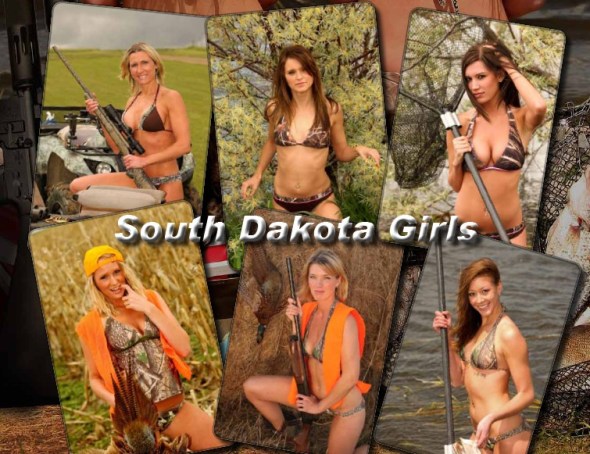
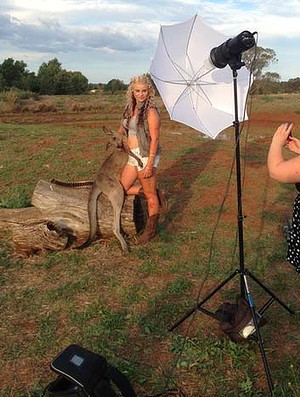
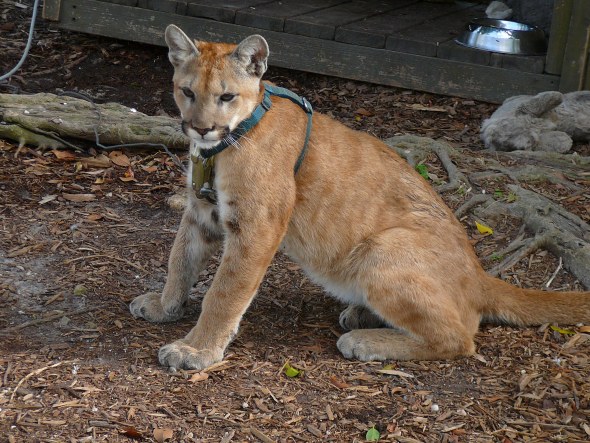
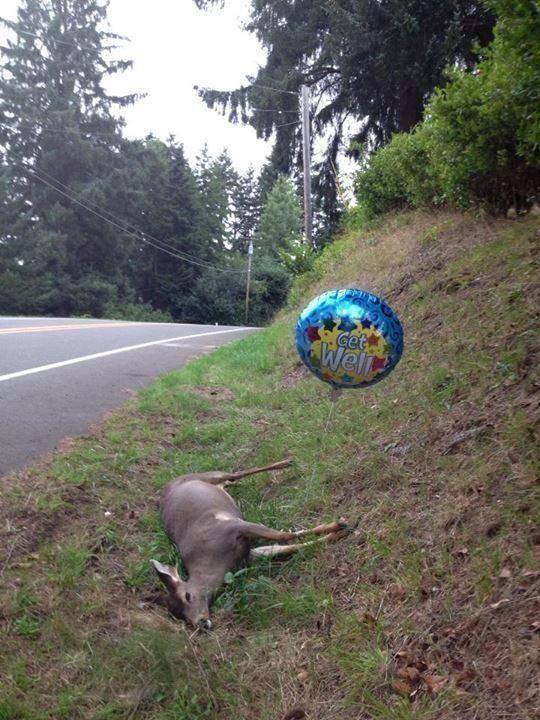
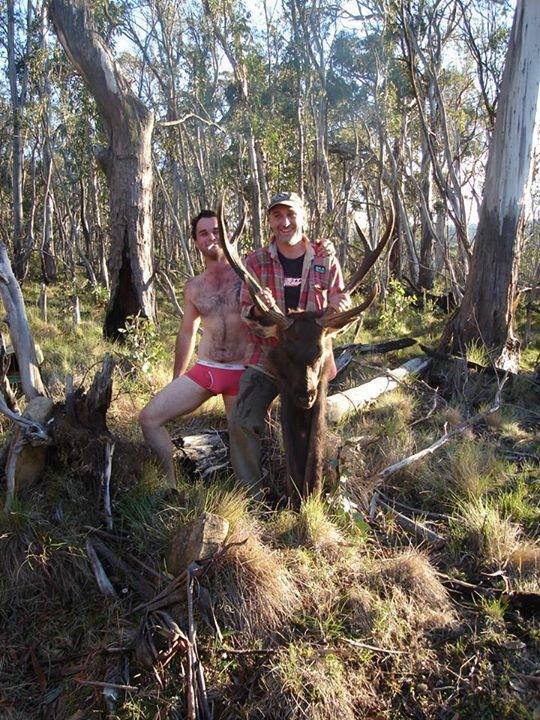
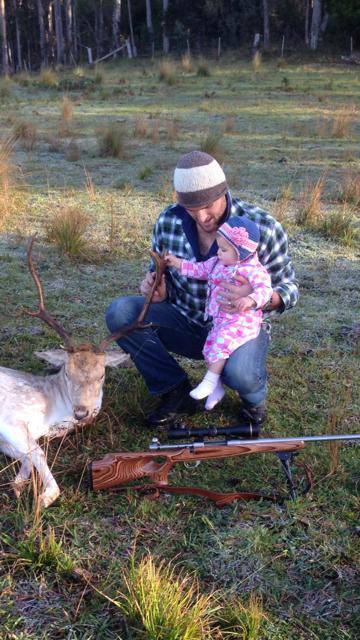


Thank you for your reply, should it merit a response we will respond in due course. This site is owned by International Animal Rescue Foundation and moderation is used.